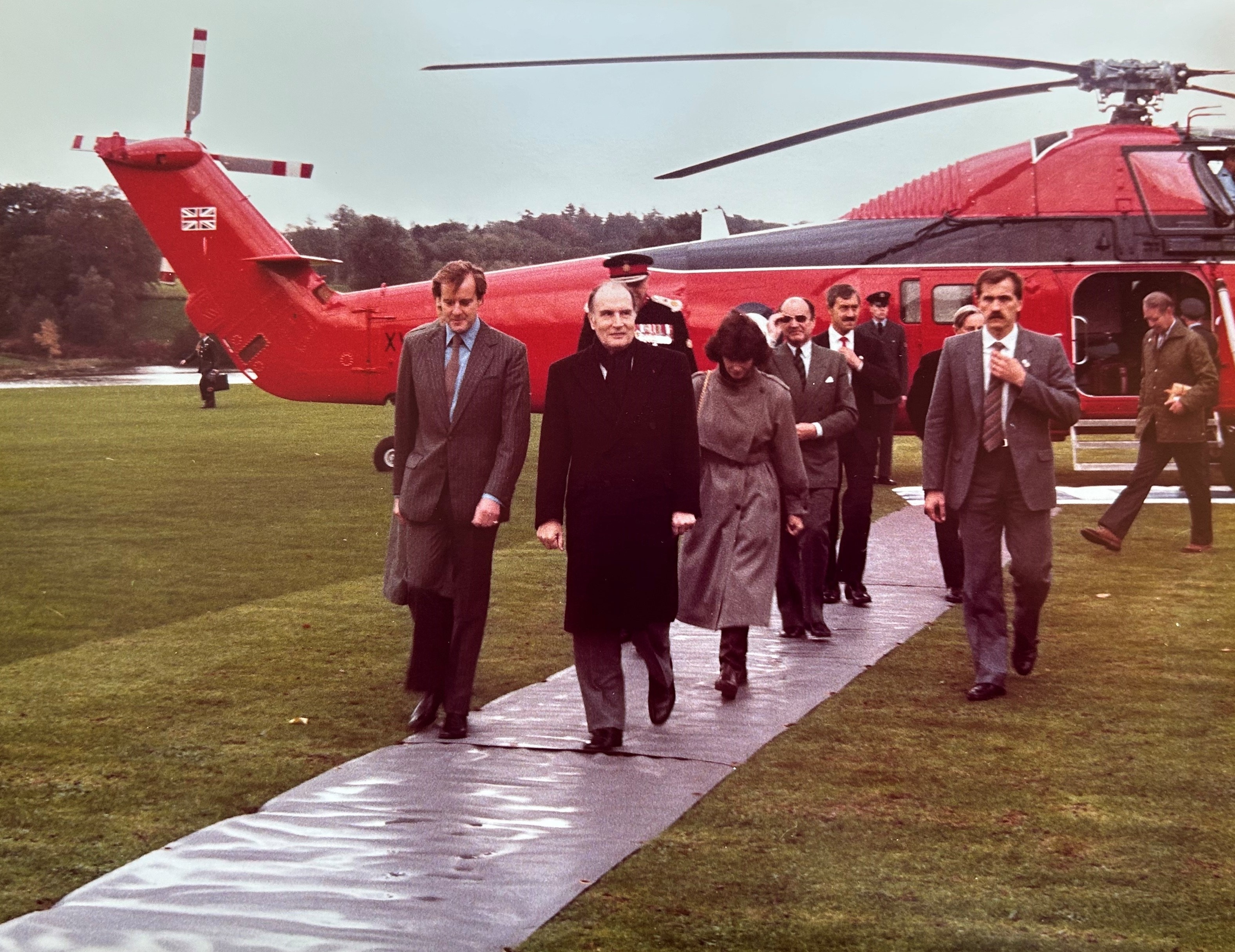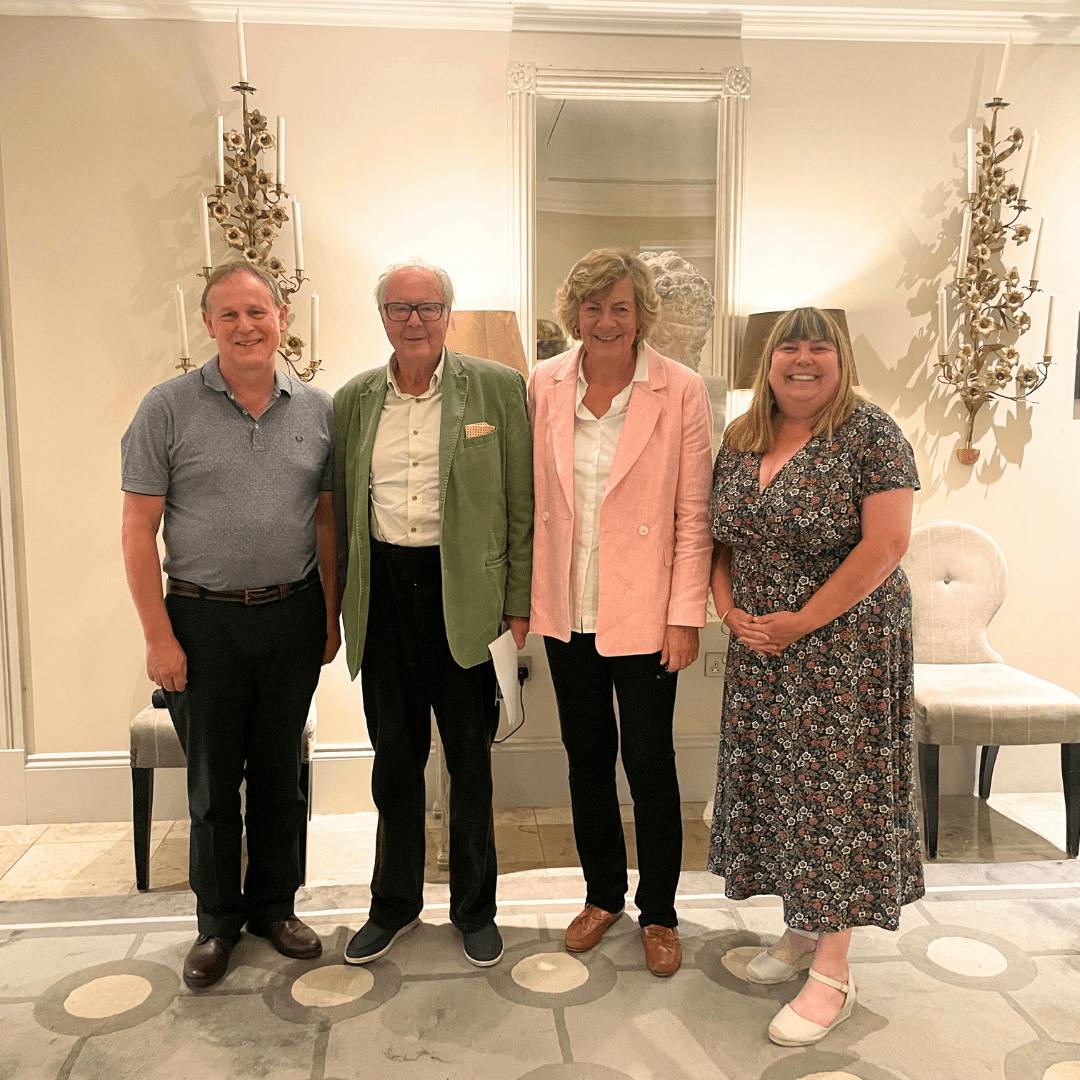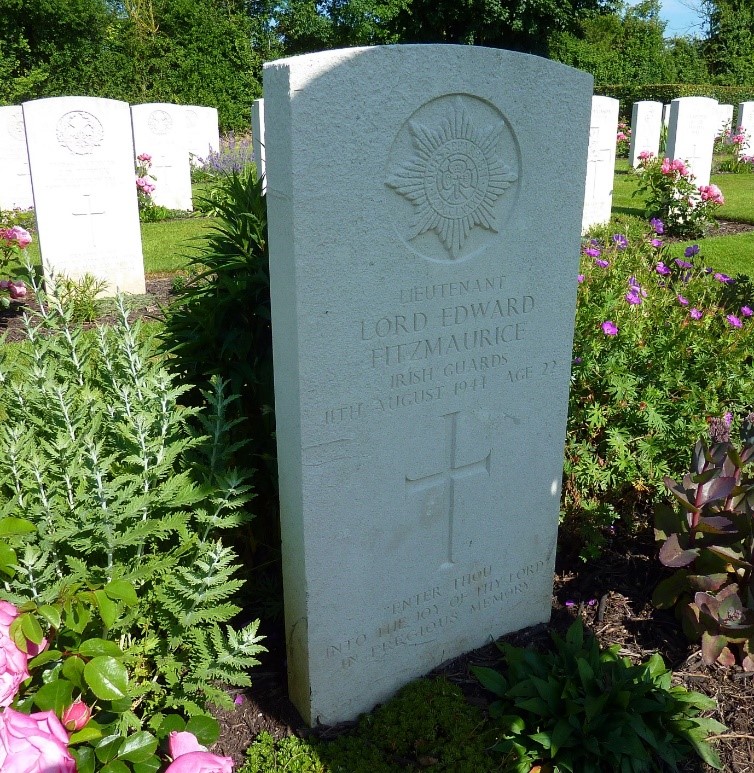On this day...
40 YEARS AGO French President Francois Mitterand and his wife, Danielle Mitterand, visited Bowood during a state visit.
October 25, 2024

Lord Shelburne, President Mitterand and Mme Mitterand on the front lawn at Bowood
The state visit, which was the first to Britain by a French head of state in eight years and was supposed to have celebrated 80 years of British-French solidarity, was overshadowed by controversy.
It was a diplomatic incident so peculiar it was parodied in the television sitcom Yes, Prime Minister – but the British cabinet was not amused at the time.
Tom King, now Lord King of Bridgwater, the then Secretary of State for Employment, recalls the bizarre event in his highly entertaining memoir, ‘A King Among Ministers.’
‘It started in the normal way with a state banquet at Buckingham Palace. The next day he (Mitterand) went to Dartmouth to commemorate his sailing from there to join the French resistance in the Second World War. While he was on his way, the lead story on the BBC News was the shock discovery of Semtex explosive in the garden of the French embassy, with more of the explosive found in a bedroom at the Grosvenor House Hotel. It turned out that this room had been occupied by a French police inspector, a member of President Mitterand’s escort. It was some time later that I discovered the whole story. The inspector had applied to bring his own dogs for the visit, but, under the quarantine rules, he was refused permission. He was convinced that only his dogs were good enough to find the explosive, and that the British police dogs were not up to the job. He therefore decided to bring some Semtex and plant it in the embassy garden - but he was proved wrong, and the British dogs passed the test! Margaret Thatcher was understandably shocked by the behaviour of this man on the President's team, and President Mitterand, if clearly embarrassed, was said to have thought that the government should have prevented the BBC from reporting the story. It did lead to a temporary diplomatic frisson, but quickly the antics of this latter-day Inspector Clouseau were not allowed to interfere with the successful achievement of an important state visit.’

Lord Shelburne and President Mitterand studying a guide to the trees at Bowood
Mrs Thatcher cared deeply about the arrangements for visits of foreign leaders. According to Lord Shelburne (the current Marquis of Lansdowne) who was managing the Estate at the time, Bowood was chosen, because it was midway between Dartmouth and London and because President Mitterand was passionate about trees and the grounds at Bowood had many fine examples. The Lansdowne family also had many French connections. Emily, the wife of the 4th Marquess of Lansdowne, was the daughter of Charles, Comte de Flahaut, who was himself the illegitimate son of Charles-Maurice de Talleyrand-Périgord. De Flahaut was a French General during the Napoleonic Wars, becoming ADC to Emperor Napoleon in 1813 and later French Ambassador to London. Emily’s son, the Fifth Marquess, negotiated the Entente Cordiale with France in 1904. The Eighth Marquis continued his family’s devotion to the French cause. Bilingual in French and English, in 1939 he was seconded to the Free French, serving with them in Africa. In 1944 he fought in enemy occupied France passing intelligence to the French Resistance in preparation for the Normandy Landings. For his bravery he was awarded the Croix de Guerre and the Légion d'honneur.
On the 25th of October the Mitterands arrived at Bowood by helicopter from Dartmouth in time for lunch. They were met by Lord Shelburne, Lord Lansdowne and other local dignitaries.

President Mitterand walking on the terraces with the national flag of France flying above Bowood.
After lunch the President and Lord Shelburne went and planted a hornbeam tree (Carpinus betulus ‘Fastigiata’) in the grounds, while Lord Lansdowne and Danielle Mitterand, who had joined in the French Resistance in 1941, becoming a liaison officer and later a recipient of the Resistance Medal, chatted together in French. While these pleasant goings on were happening at Bowood, in London English and French authorities opened ‘urgent’ discussions about the Semtex incident. Mrs Thatcher, who had narrowly escaped death on the 12th of October when an Irish Republican Army bomb killed four people at the Grand Hotel in Brighton, stressed that it should not mar the success of the visit, but she expected an apology from the French.

President Mitterand planting a Hornbeam with Derek Duck, then Head Gardener, watching
By all accounts the visit to Bowood and particularly the planting of the tree did much to diffuse what the British cabinet referred to as a difficult matter. The Mitterands returned to London to continue their state visit, the police officer who had smuggled in the Semtex was quickly removed from the President’s entourage and of course Mrs Thatcher soon forgot about the matter.

President Mitterand with Lord Shelburne meeting members of the Bowood staff and their families
The visit set the trend for further Anglo-French summits, in which the French president and a British prime minister met together with a small number of senior colleagues in some appropriate location for informal talks.

The hornbeam tree (Carpinus betulus ‘Fastigiata’) today

